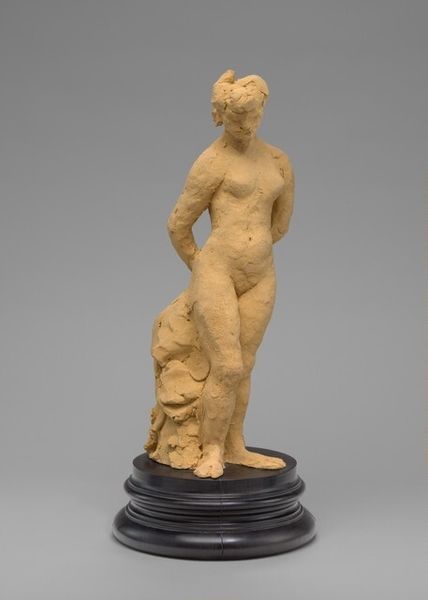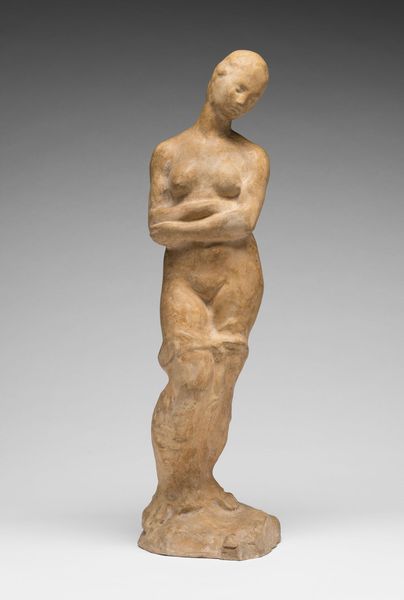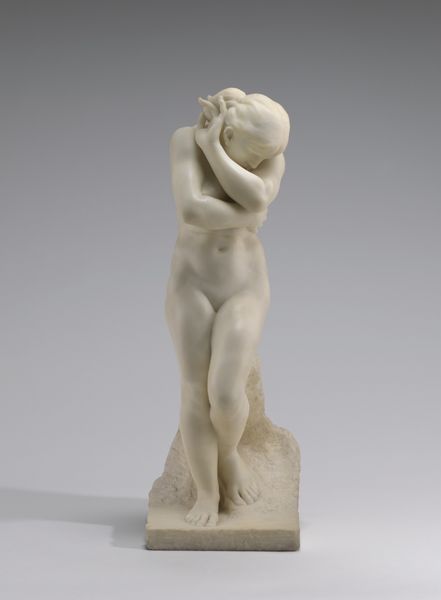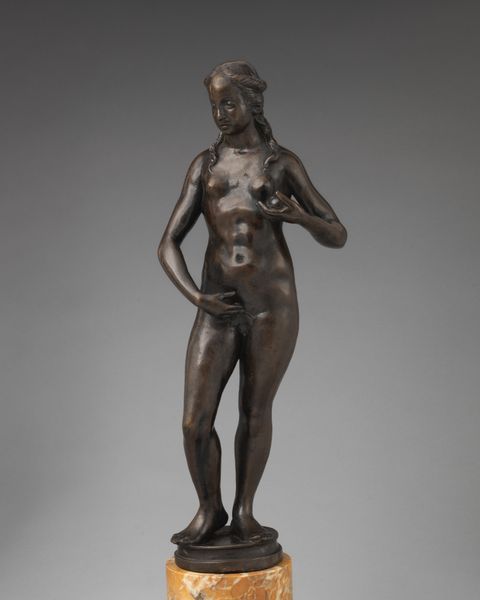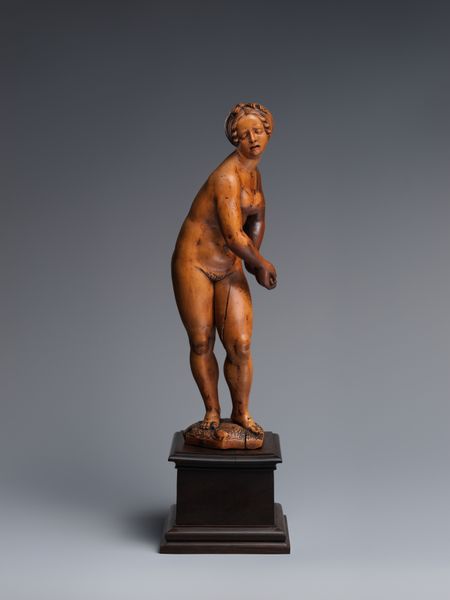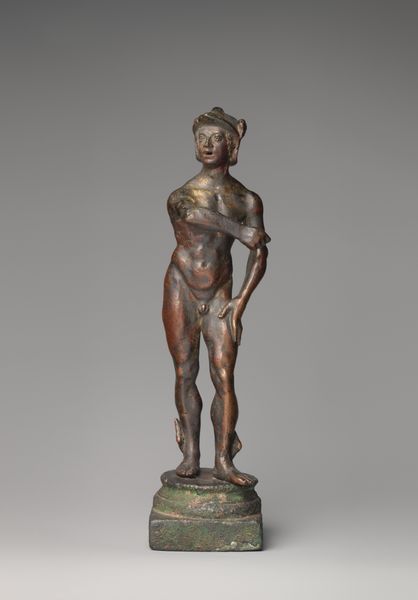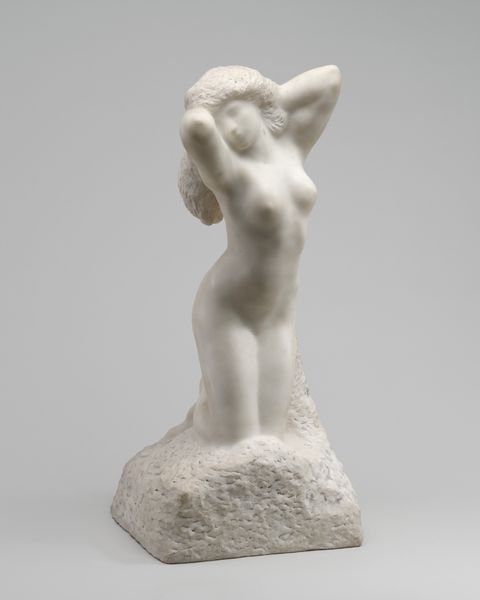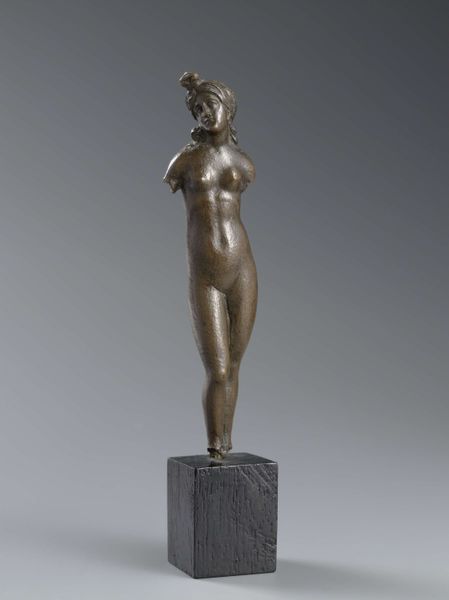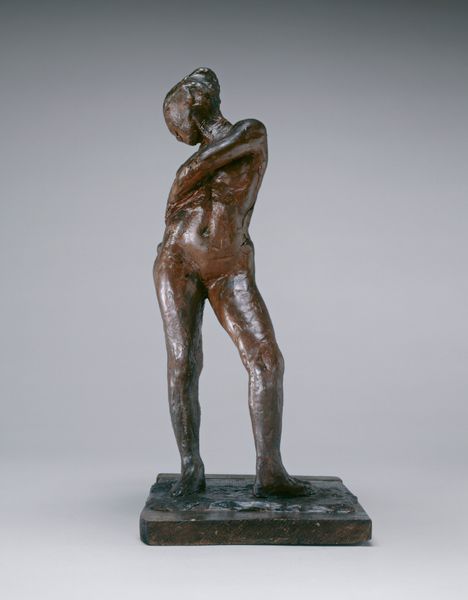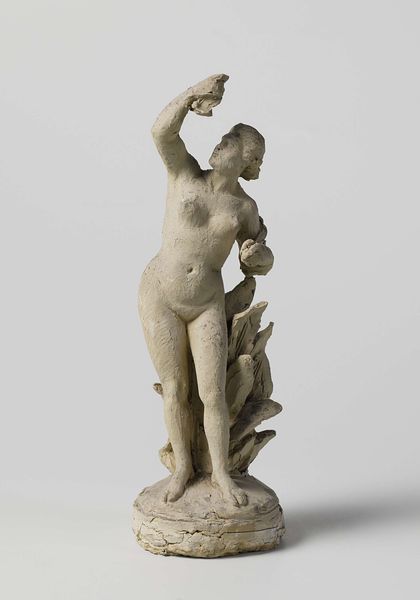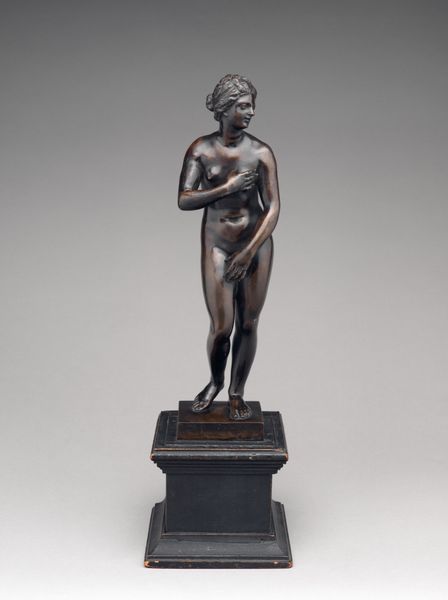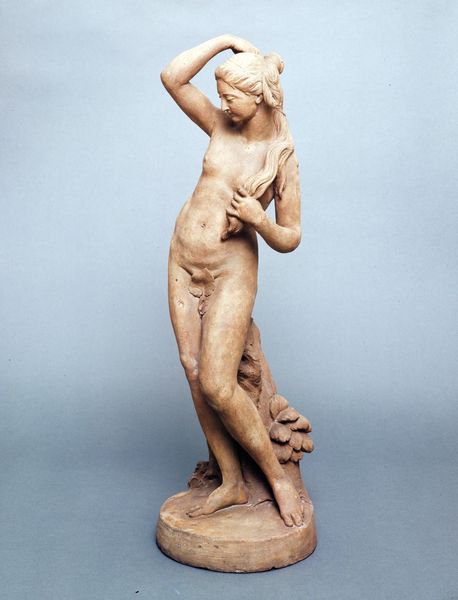
sculpture
#
statue
#
sculpture
#
product design sketch
#
3d character model
#
sculptural image
#
unrealistic statue
#
character sketch
#
sculpture
#
figure sketch
#
character design
#
technical sketch
#
3d character modeling
Dimensions: overall: 35 x 17.2 x 18.7 cm (13 3/4 x 6 3/4 x 7 3/8 in.)
Copyright: National Gallery of Art: CC0 1.0
Curator: There's a peculiar mix of fragility and strength in this small sculpture, it almost feels unfinished in places. Editor: Indeed. This is Auguste Rodin's "Statuette of a Woman," from the early 1880s. Note how Rodin departs from the traditional, polished ideal of the female nude. Curator: Yes, and consider the figure's gaze directed upwards, maybe to some divine power? It evokes ideas of transformation and aspiration—themes central to much spiritual imagery. Is this goddess emerging, almost phoenix-like, from the rough, earthy base? Editor: Possibly, or consider it in light of the social and political shifts of the time. Rodin's portrayal certainly challenges the conventional representations favored by the academy and wealthy patrons. It hints at a naturalistic, less idealized, representation of women. Curator: That earthy material—what looks like terracotta or plaster—contributes to that grounded, natural feel. In contrast with more traditionally valorized marbles. Also, she strikes me as caught in mid-motion. It feels like there is an implied narrative, drawing from centuries of storytelling through figurative sculpture. Editor: Right, and its scale—likely intended for intimate viewing in a private collection—diverges from monumental, public sculptures that affirmed civic values. The woman almost emerges out of the chaotic, rough-hewn rock formation that becomes a swirling robe. That contrast is rather interesting and dramatic, if I may say so. Curator: I agree—this isn't just a depiction of a woman, but perhaps the visualization of potential. Her vulnerability becomes her power. I sense also that she’s very rooted, like Gaia, with the implication that there are endless connections below the surface. Editor: Ultimately, I think, Rodin uses the classical form of the female nude to speak to the shifting societal and aesthetic sensibilities of his era, engaging the public in discourse about representation and the body. Curator: Yes, seeing these resonances definitely enriches my own interpretation. The figure holds up surprisingly well, retaining much of its forcefulness and power, down to our days. Editor: I concur; I will continue to reflect on these social aspects going forward in the presence of Rodin's artwork.
Comments
No comments
Be the first to comment and join the conversation on the ultimate creative platform.
